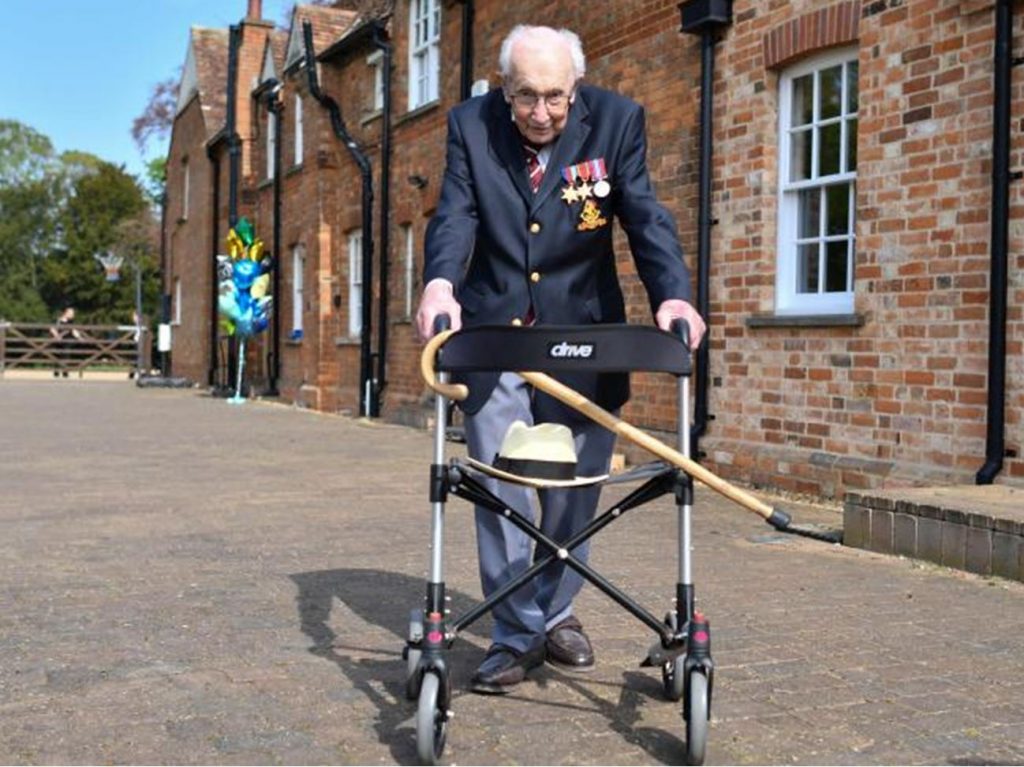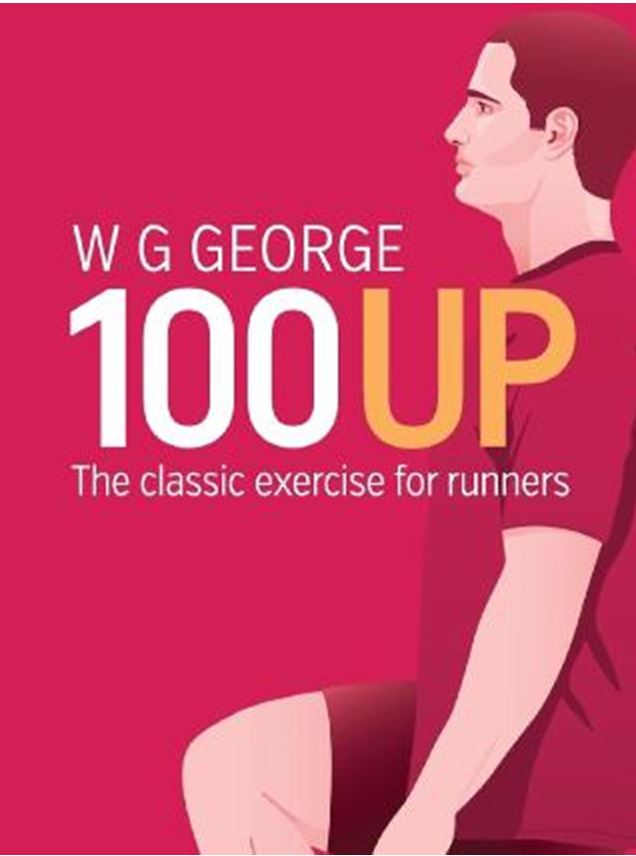Step this way: easy walking workouts



Walking an extra 4000 steps taken in a day, reduces the risk of dying early from heart disease, cancer and other causes by about 50 per cent, a study found
Captain Tom Moore, 99, raise £27m ($53m) for Britain’s National Health Service last week by walking 100 laps of his garden, but even for the less heroic among us, setting yourself a fitness target while confined to home will pay dividends during lockdown.
A recent study involving almost 5000 middle-aged men and women showed that doing laps of the garden — or any other means of totting up daily steps — led to significant improvements in physical fitness.



British World War II veteran Captain Tom Moore, 99, in his garden in the village of Marston Moretaine. Picture: AFP
Reporting in the Journal of the American Medical Association, researchers from the US National Institutes of Health found that for an extra 4000 steps taken in a day, the risk of dying early from heart disease, cancer and other causes drops by about 50 per cent. Those taking up to 8000 steps a day when asked to wear a fitness tracker for a week between 2003 and 2006 were about half as likely to have died from heart disease, cancer or any other cause compared with people totting up 4000 steps or fewer when mortality records were checked in 2015.
The subjects came from a range of ethnic and socio-economic backgrounds and the data was controlled for gender, age, smoking, diet, weight and other health-related influences.
The steps did not need to be vigorous or accumulated in a single session, which means that, even if you aren’t up for an online workout, you can improve your health by staying upright and moving as much as possible.
“Walk around the house doing daily tasks and you accumulate walking steps,” Dr Javier Gonzalez, a physiologist at Britain’s University of Bath, says. “But you can also achieve higher-intensity walking steps without leaving the house.”
Here are the three best ways to add home walking to your fitness regimen.
Walk in your living room
Lucy Wyndham-Read, 49, is a personal trainer with more than a million subscribers to her YouTube channel of free home workouts, including one with 55 million views, the most liked fitness video on the site. Her 21 indoor walking workouts are outperforming most others, with about a million views in 48 hours once lockdown started.
Designed to be performed in your living room (although you can do them outside), they focus on vigorous marching and stepping in different directions, sometimes interspersed with stretches, lunges and other body strength moves, that can help you to tot up several thousand steps.
“It’s absolutely possible to achieve walking fitness inside your home and to achieve a considerable number of walking steps indoors,” Wyndham-Read says. “By adding intervals of 30 seconds of fast walking you can raise your heart rate as well as improve endurance, and in a more challenging 30-minute indoor workout you can cover up to 6,000 steps.” In her seven-minute indoor walkout at “fat burning pace” you will cover 1000 steps as follows:
1. March on the spot for five seconds, then side-lunge in each direction for five seconds. Continue for 60 seconds.
2. Curtsy-lunge for 10 seconds; side-lunge in each direction for 10 seconds. Continue for 60 seconds.
3. March powerfully on the spot for 15 seconds and then raise your knees as high as you can for 15 seconds. Continue for 60 seconds.
4. March vigorously while alternating between a breaststroke arm action for 15 seconds and raising your arms overhead for 15 seconds. Continue for 60 seconds.
5. Alternate between 15 seconds of straight-leg high forward kicks and 15 seconds of toe taps to each side for a total of 60 seconds.
6. March vigorously for 10 seconds and then raise your left knee to touch your right elbow and right knee to touch your left elbow for 10 seconds. Repeat for 60 seconds.
7. March at a fast pace and perform a squat every 10 seconds. Continue for 60 seconds.
Do the “100 up” every day
If there is a fitness manual for these times, it may come in the unlikely form of a book originally published in 1908 by Walter G George, a British runner who set a world record for the mile of 4 minutes 12 seconds in 1886. From the age of 16 George’s opportunities for training were limited when he took up an apprenticeship at a chemist that required him to work indoors all day with only one hour’s leave for “recreation”. Sounding familiar? To get fitter, George devised a routine he called the 100 Up that required no equipment, only a 55cm-square floor space and was performed on the spot. His method has stood the test of time, getting the thumbs-up from sports scientists.



“It closely mimics stair climbing, so would be great for people in a flat or bungalow who don’t have stairs to get some leg strength work in,” Gonzalez says. It has attracted a cult-like following among runners and coaches and has been reproduced in a slim, 49-page book that just might become a lockdown necessity.
There are two levels of the 100 Up exercise — the minor (or easier) and the major — with the higher-effort version simulating an exaggerated running technique that will build strength and endurance in muscles. Start with the lower-intensity move, which is essentially controlled marching on the spot.
1. Stand with feet about 20cm apart.
2. Adopt a “running position” with your arms.
3 Raise one knee at a time to hip height — this is important — before lowering back down to its original position.
4. Repeat this movement 100 times a day. If it’s too much in one go, accumulate the movement in bouts of 20 repetitions (10 on each leg) throughout the day.
5. Once you can comfortably manage 100 walking steps in one go, progress to the “major” version, which involves the same movement pattern at greater speed in an exaggerated running action. Start on the balls of your feet with “heels being clear of the ground and the head and body being tilted very slightly forward”, George writes. Then “spring from the toe, bringing the knee to the level of the hip” and “repeat with the other leg, raising and lowering the legs alternately”. Aim for 100 in one go, performing more than one set throughout the day as you get fitter.
Try a stair workout
Sylvester Stallone as the character Rocky in the boxing film franchise of the same name used steps to reach supreme fitness, and now it’s your turn. “Stairs are a great way to get some additional benefits over just walking on the spot,” Gonzalez says. “Using them forces you to work the legs a little bit harder and provides a bit more of a strength workout than normal walking.”



Rocky Balboa, played by Sylvester Stallone, conquers the stairs to the entrance of the Philadelphia Museum of Art, in Philadelphia, Pennsylvania
Last year a study from McMaster University in Canada reported that a few minutes of stair climbing, at short intervals throughout the day, can improve cardiovascular health. For their study, published in the journal Applied Physiology, Nutrition, and Metabolism, researchers asked sedentary office workers to run hard up a three-flight staircase three times a day, with one to four hours of recovery time between each burst. They repeated this three times a week over six weeks and, compared with non-exercising controls, were fitter and stronger by the end of the trial.
Others have shown stair climbing to lower blood pressure and improve brain health. “Both walking and running upstairs offer a good workout, so choose where you start depending on your fitness level,” Gonzalez says.
Think about technique — as you climb up, lean forward slightly and pump your arms. Think about pushing off the balls of your feet and using all of your leg muscles. On the way down, try to land softly so your glutes take the impact instead of your knees. And be extremely careful not to fall. Try these stair workouts recommended by the American Council on Exercise:
Beginner: Warm up with three to five minutes’ marching on the spot. Walk up and down the stairs five to 10 times. March on the spot for three to five minutes.
Intermediate: Warm-up with three to five minutes’ marching on the spot. Run up the stairs and walk down for five to 15 minutes non-stop. March on the spot for three to five minutes.
Advanced: Warm up with three to five minutes’ marching on the spot. Run up every step and walk down, repeating five to eight times. Then run up every other step and walk down three to five times. Finally, run sideways up every step and walk down, repeating three times one each side. March on the spot for three to five minutes.
After every stair workout, stretch your calves, quads and hips.
The Times
Get A Gym Membership Today.
Call now, we’d love to welcome you to our Southport Gym.
